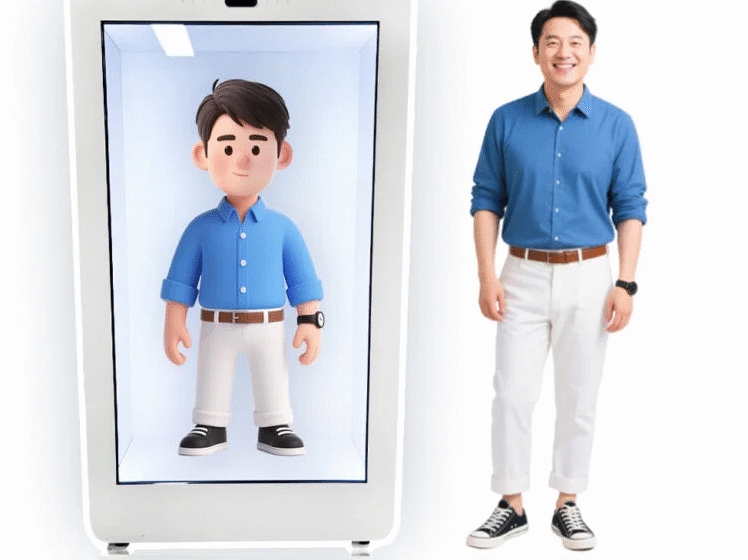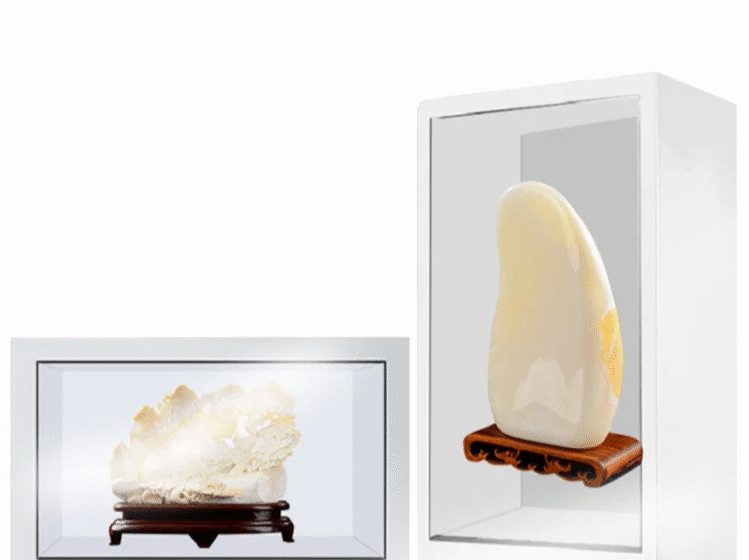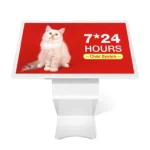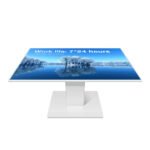Can a 3D Hologram Monitor Break Through Digital Signage Clutter?
In today’s hyper-saturated media environment, businesses across all sectors face the monumental challenge of capturing and retaining consumer attention. Traditional two-dimensional digital signage, while effective in its time, is increasingly blending into the background noise, failing to elicit the “stop and stare” effect crucial for effective marketing and information delivery. This market dynamic has created a critical demand for a disruptive visual solution—a demand being decisively answered by the cutting-edge technology of the 3D hologram monitor. For digital signage product users, particularly those managing high-traffic commercial, retail, or exhibition spaces, understanding the profound capabilities of a 3D hologram monitor is no longer a luxury but a necessity for future-proofing communication strategies. This detailed exploration will delve into the underlying technology, the transformative benefits it brings to digital out-of-home (DOOH) advertising, and the strategic value it offers to brands seeking unparalleled consumer engagement.
Defining the Technology: The Mechanics of a 3D Hologram Monitor
To fully appreciate the commercial power of the 3D hologram monitor, one must first grasp the fundamental technical distinction that separates it from conventional flat-screen displays. Unlike standard screens that rely on simple projected images or stereoscopic techniques requiring cumbersome glasses, a true 3D hologram monitor aims to recreate a three-dimensional light field, presenting objects that appear to genuinely float in mid-air.
The most commercially viable and widely deployed forms of this technology utilize sophisticated optical systems to achieve this remarkable effect. One prominent method involves the use of specialized rotating arrays of LED lights or light field displays. In the case of LED fan-based systems, rapidly spinning blades embedded with LED strips create a persistence-of-vision effect. As the blades rotate at high velocity, the LEDs display specific patterns of light, and the human eye perceives these patterns as a complete, volumetric image floating within the fan’s operational area. This method is highly effective for creating vibrant, dynamic, and glasses-free 3D visualizations that can be viewed from multiple angles.
Furthermore, more advanced holographic platforms, often referred to as light field displays, meticulously control the direction of light rays emitted from the display surface. These monitors employ complex optics and specialized pixel structures to project a different image to the viewer’s left eye than to the right, irrespective of the viewer’s position, thereby generating a genuine sense of depth and parallax. This technical mastery of light manipulation ensures that the holographic image possesses motion parallax, meaning the viewer can physically move around the display and see the simulated object from different perspectives, a feature that drastically enhances realism and user engagement. Ultimately, this technological leap transforms static content into a memorable, spatial experience.

Transforming Retail and Advertising: The Engagement Imperative
The primary value proposition of the 3D hologram monitor lies in its unprecedented ability to command attention and increase audience dwell time, two metrics that are absolutely crucial in the digital signage landscape. In an environment where consumers are constantly bombarded by visual information, the novelty and ‘magic’ of a holographic display serve as a powerful and organic attention magnet.
Consequently, brands are leveraging this technology to elevate their visual merchandising and advertising campaigns. When a product—such as a new luxury watch, a complex engine part, or a prototype shoe—is displayed as a seemingly tangible, floating 3D hologram, it immediately disrupts the visual status quo. Shoppers and passersby are compelled to stop, observe the object from various angles, and often share the captivating visual on social media, generating invaluable organic buzz. Studies consistently show that the interactive and immersive nature of holographic marketing significantly increases memory retention and brand recall compared to traditional 2D media. The sheer surprise factor inherent in watching a detailed 3D object materialize out of thin air creates an emotional connection and a memorable experience for the consumer.
Moreover, the 3D hologram monitor provides a flexible and efficient solution for retailers facing limited physical space. Instead of stocking multiple physical product samples or setting up large, cumbersome displays, a single holographic unit can cycle through an entire product catalog, demonstrating features, color variations, or even internal mechanics with photorealistic clarity. This not only optimizes floor real estate but also offers a level of visual detail that is often impossible to achieve with physical products alone, directly addressing customer questions and building purchase confidence by showcasing intricate details in an engaging, three-dimensional manner.

Sector-Specific Applications in High-Value Digital Signage
The deployment of the 3D hologram monitor is extending far beyond traditional retail advertising, demonstrating profound utility in specialized digital signage sectors where information clarity and high-impact visualization are paramount.
In corporate showrooms and trade shows, the 3D hologram monitor is redefining product demonstration. Imagine an engineering firm using the display to project a detailed, life-size holographic model of a new piece of industrial machinery, allowing potential clients to virtually walk around the machine, zoom in on internal components, and view animated simulations of its operation. This experiential storytelling surpasses static brochures or videos, giving the viewer an immediate, spatial understanding of the product’s complexity and value. It serves as an instant conversation starter and a powerful differentiator in crowded exhibition halls.
For museums and educational institutions, holographic displays offer an unparalleled method for historical and scientific visualization. Instead of a flat image, artifacts, extinct animals, or complex anatomical structures can be rendered as volumetric 3D models. Students and visitors can view a spinning model of a DNA helix or a historical building, interacting with it touch-free to peel back layers of information. This dynamic, immersive presentation fosters deeper learning and engagement, making complex subjects intuitively accessible to a wider audience.
Furthermore, in the high-stakes world of wayfinding and public information, a 3D hologram monitor can be deployed to create eye-catching, unique navigational points. A holographic avatar or an animated arrow floating above a kiosk in a large airport or shopping center is far more likely to capture the attention of a distracted traveler than a static screen. This capability to stand out in visually noisy environments makes the technology highly effective for critical public service announcements and emergency information delivery, where immediate and unambiguous communication is essential.
The Future Outlook and Strategic Investment
The trajectory of the 3D hologram monitor points toward increasing accessibility and integration with other emerging technologies. As manufacturing processes mature and the cost of light field panels decreases, these displays are predicted to become as ubiquitous in high-value locations as standard LED screens are today.
A critical area of future development involves the seamless integration of Artificial Intelligence (AI) and Augmented Reality (AR). Soon, holographic displays will transition from passive attention-grabbers to truly intelligent, interactive agents. For example, an AI-powered holographic retail assistant could be programmed to recognize a customer’s presence, analyze demographic data, and project a personalized, relevant product presentation in real-time. Furthermore, the integration with gesture control and proximity sensors will allow users to interact with the floating 3D content—rotating a product, changing its color, or initiating a video—without touching any physical surface. This level of touchless, personalized interactivity not only meets the demands of the modern consumer but also provides invaluable real-time data to businesses regarding product engagement and consumer preferences.
Choosing to invest in a 3D hologram monitor is a decision to adopt a future-forward communication platform. It is a strategic move that positions a brand as innovative, technologically advanced, and committed to delivering superior customer experiences. For digital signage professionals, carefully evaluating providers based on content compatibility (especially support for various 3D file formats), ease of deployment, and the vibrancy and realism of the holographic projection is key to unlocking the full potential of this revolutionary display technology.
Frequently Asked Questions (FAQ)
Q: Does a 3D hologram monitor require special glasses for the viewer?
A: No, one of the primary advantages of modern 3D hologram monitor technology, particularly light field displays and LED fan systems, is that they are glasses-free (autostereoscopic). They use sophisticated optics or rapid light manipulation to project a genuine 3D image that can be viewed by multiple people simultaneously without any special eyewear.
Q: What kind of content is best suited for a 3D hologram monitor?
A: The most effective content is three-dimensional models of products, logos, animated brand mascots, or abstract visual effects designed to demonstrate features or highlight complexity. Since the display creates a spatial presence, content that moves, rotates, or has complex textures yields the highest engagement. Standard 2D video content is not optimized for the holographic effect.
Q: Are these displays cost-effective compared to traditional digital signage?
A: While the initial hardware investment for a 3D hologram monitor can be higher than a standard flat screen, they offer superior cost-effectiveness in terms of engagement and ROI. They drastically increase audience dwell time, brand recall, and often generate free social media buzz, leading to higher conversion rates that often justify the initial expenditure by offering a unique competitive advantage.



